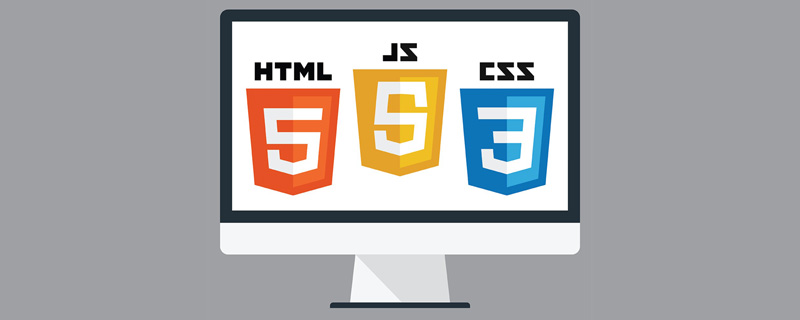 Web Front-end
Web Front-end JS Tutorial
JS Tutorial Native js and jQuery implement fade-in and fade-out carousel effect_jquery
Native js and jQuery implement fade-in and fade-out carousel effect_jqueryThe example in this article introduces the key code for realizing the fade-in and fade-out carousel effect based on jQuery, and shares it with you for your reference. The specific content is as follows:
Basic principle: Position all pictures absolutely at the same position, set the transparency to 0, and then use jQuery's fade-in and fade-out to achieve the picture switching effect.
html code:
<html>
<head>
<meta http-equiv="Content-Type" content="text/html; charset=utf-8" />
<title>一个轮播</title>
<style>
#scrollPlay{
width: 730px;
height: 336px;
/*overflow: hidden;*/
}
#pre{
position: absolute;
margin-top: 150px;
width:30px;
height: 30px;
background: #000;
color:#fff;
opacity: 0.7;
text-align: center;
line-height: 30px;
font-size: 20px;
z-index: 10;
}
img{
opacity: 0;
position: absolute;
}
#next{
position: absolute;
margin-left:700px;
margin-top: 150px;
width:30px;
height: 30px;
background: #000;
color:#fff;
opacity: 0.7;
text-align: center;
line-height: 30px;
font-size: 20px;
z-index: 10;
}
span{
display: block;
width: 15px;
height: 15px;
float: left;
border: 1px solid #fff;
}
#buttons{
position: absolute;
background: #000;
margin-top: 300px;
margin-left: 300px;
z-index: 10;
}
.onactive{
background: green;
}
</style>
<script src='jquery.js'></script>
<script src='index.js'></script>
</head>
<body>
<div id='scrollPlay'>
<div id='buttons'>
<span index = 0 class='onactive'></span>
<span index = 1></span>
<span index = 2></span>
<span index = 3></span>
<span index = 4></span>
</div>
<div id='pre'><</div>
<div id='next'>></div>
<img src='images/1.jpg' alt='pics' style="max-width:90%">
<img src='images/2.jpg' alt='pics'>
<img src='images/3.jpg' alt='pics'>
<img src='images/4.jpg' alt='pics'>
<img src='images/5.jpg' alt='pics'>
</div>
</body>
</html>
JS:
$(function(){
var index = 0;
var flag = false; //用于判断是否处于动画状态
//切换函数
function move(offset){
flag=true;
//console.log(offset)
$('img').eq(index).fadeOut('slow',function(){
if(offset>0){
if(index ==4){
index=0;
}else{
//console.log(index);
index=index+offset;
//console.log(index);
}
}
if(offset<0){
if(index==0){
index=4;
}else{
index=index+offset
}
}
$('img').eq(index).fadeTo('slow',1) //使用fadeIn不成功:$('img').eq(index).fadeIn('slow')
showButton();
flag=false;
});
}
//点击切换上一张
$('#pre').click(function(){
if(flag==false){
move(-1)
}
})
//点击切换下一张
$('#next').click(function(){
if(flag==false){
move(1)
}
})
//点击按钮直接切换
$('span').click(function(){
if(flag==false){
var i= $(this).attr('index')
//console.log(i)
//console.log(index)
//console.log(i-index)
move(i-index)
showButton();
}
})
//高亮显示按钮
function showButton(){
if($('span').hasClass('onactive')){
$('span').removeClass();
}
$('span').eq(index).addClass('onactive')
}
//自动播放
var timer;
function go(){
timer = setInterval(function(){
$('#next').trigger('click');
},3000)
}
//鼠标悬停,清除自动播放
$('#scrollPlay').mouseover(function(){
clearInterval(timer)
})
//鼠标移开,开始自动播放
$('#scrollPlay').mouseout(function(){
go();
})
go();
})
At the end of the article, I raised a small question for you, and I hope you can give me a solution.
There is no effect when using fadeIn to fade in. In the end, it can only be achieved by using fadeTo. What is the reason?
Let me share with you a small example: Native JS implements fade-in/fade-out effect (fadeIn/fadeOut/fadeTo)
The fade effect is often used in daily projects. Unfortunately, native JS does not have a similar method, and sometimes small pages are not worth introducing a jQuery library, so I wrote one myself. It is encapsulated and useful. Friends who have it can use it directly. There is also a method to set the transparency of elements in the code, which is set according to IE rules (0~100). If it is changed to the standard setting method (0.00~1.00), please consider floating when using it below. Point to express the difference accurately.
Parameter description:
Both fadeIn() and fadeOut() have three parameters. The first is the event, which is required; the second is the fade-in and fade-out speed, a positive integer, the size is weighed by yourself, and is optional; the third is the specified fade-in and fade-out point. Transparency value (similar to fadeTo() in jQuery), a positive integer value from 0 to 100, which is also an optional parameter.
<html>
<head>
<meta http-equiv="Content-Type" content="text/html; charset=UTF-8" />
<title>原生JS实现淡入淡出效果</title>
<style>
/*demo css*/
#demo div.box {float:left;width:31%;margin:0 1%}
#demo div.box h2{margin-bottom:10px}
#demo div.box h2 input{padding:5px 8px;font-size:14px;font-weight:bolder}
#demo div.box div{text-indent:10px; line-height:22px;border:2px solid #555;padding:0.5em;overflow:hidden}
</style>
<script>
window.onload = function(){
//底层共用
var iBase = {
Id: function(name){
return document.getElementById(name);
},
//设置元素透明度,透明度值按IE规则计,即0~100
SetOpacity: function(ev, v){
ev.filters ? ev.style.filter = 'alpha(opacity=' + v + ')' : ev.style.opacity = v / 100;
}
}
//淡入效果(含淡入到指定透明度)
function fadeIn(elem, speed, opacity){
/*
* 参数说明
* elem==>需要淡入的元素
* speed==>淡入速度,正整数(可选)
* opacity==>淡入到指定的透明度,0~100(可选)
*/
speedspeed = speed || 20;
opacityopacity = opacity || 100;
//显示元素,并将元素值为0透明度(不可见)
elem.style.display = 'block';
iBase.SetOpacity(elem, 0);
//初始化透明度变化值为0
var val = 0;
//循环将透明值以5递增,即淡入效果
(function(){
iBase.SetOpacity(elem, val);
val += 5;
if (val <= opacity) {
setTimeout(arguments.callee, speed)
}
})();
}
//淡出效果(含淡出到指定透明度)
function fadeOut(elem, speed, opacity){
/*
* 参数说明
* elem==>需要淡入的元素
* speed==>淡入速度,正整数(可选)
* opacity==>淡入到指定的透明度,0~100(可选)
*/
speedspeed = speed || 20;
opacityopacity = opacity || 0;
//初始化透明度变化值为0
var val = 100;
//循环将透明值以5递减,即淡出效果
(function(){
iBase.SetOpacity(elem, val);
val -= 5;
if (val >= opacity) {
setTimeout(arguments.callee, speed);
}else if (val < 0) {
//元素透明度为0后隐藏元素
elem.style.display = 'none';
}
})();
}
var btns = iBase.Id('demo').getElementsByTagName('input');
btns[0].onclick = function(){
fadeIn(iBase.Id('fadeIn'));
}
btns[1].onclick = function(){
fadeOut(iBase.Id('fadeOut'),40);
}
btns[2].onclick = function(){
fadeOut(iBase.Id('fadeTo'), 20, 10);
}
}
</script>
</head>
<body>
<!--DEMO start-->
<div id="demo">
<div class="box">
<h2><input type="button" value="点击淡入" /></h2>
<div id="fadeIn" style="display:none">
<p>脚本之家</p>
<p>www.jb51.net</p>
</div>
<p>脚本之家是国内专业的网站建设资源.</p>
</div>
<div class="box">
<h2><input type="button" value="点击淡出" /></h2>
<div id="fadeOut">
<p>脚本之家</p>
<p>www.jb51.net</p>
</div>
<p>脚本之家是国内专业的网站建设资源.</p>
</div>
<div class="box">
<h2><input type="button" value="点击淡出至指定透明度" /></h2>
<div id="fadeTo">
</div>
<p>脚本之家是国内专业的网站建设资源.</p>
</div>
</div>
<!--DEMO end-->
</body>
</html>
The above is the entire content of this article. I hope it will be helpful for everyone to learn native js and jQuery to achieve the fade-in and fade-out carousel effect.
 如何使用JS和百度地图实现地图平移功能Nov 21, 2023 am 10:00 AM
如何使用JS和百度地图实现地图平移功能Nov 21, 2023 am 10:00 AM如何使用JS和百度地图实现地图平移功能百度地图是一款广泛使用的地图服务平台,在Web开发中经常用于展示地理信息、定位等功能。本文将介绍如何使用JS和百度地图API实现地图平移功能,并提供具体的代码示例。一、准备工作使用百度地图API前,首先需要在百度地图开放平台(http://lbsyun.baidu.com/)上申请一个开发者账号,并创建一个应用。创建完成
 js字符串转数组Aug 03, 2023 pm 01:34 PM
js字符串转数组Aug 03, 2023 pm 01:34 PMjs字符串转数组的方法:1、使用“split()”方法,可以根据指定的分隔符将字符串分割成数组元素;2、使用“Array.from()”方法,可以将可迭代对象或类数组对象转换成真正的数组;3、使用for循环遍历,将每个字符依次添加到数组中;4、使用“Array.split()”方法,通过调用“Array.prototype.forEach()”将一个字符串拆分成数组的快捷方式。
 如何使用JS和百度地图实现地图热力图功能Nov 21, 2023 am 09:33 AM
如何使用JS和百度地图实现地图热力图功能Nov 21, 2023 am 09:33 AM如何使用JS和百度地图实现地图热力图功能简介:随着互联网和移动设备的迅速发展,地图成为了一种普遍的应用场景。而热力图作为一种可视化的展示方式,能够帮助我们更直观地了解数据的分布情况。本文将介绍如何使用JS和百度地图API来实现地图热力图的功能,并提供具体的代码示例。准备工作:在开始之前,你需要准备以下事项:一个百度开发者账号,并创建一个应用,获取到相应的AP
 如何使用JS和百度地图实现地图多边形绘制功能Nov 21, 2023 am 10:53 AM
如何使用JS和百度地图实现地图多边形绘制功能Nov 21, 2023 am 10:53 AM如何使用JS和百度地图实现地图多边形绘制功能在现代网页开发中,地图应用已经成为常见的功能之一。而地图上绘制多边形,可以帮助我们将特定区域进行标记,方便用户进行查看和分析。本文将介绍如何使用JS和百度地图API实现地图多边形绘制功能,并提供具体的代码示例。首先,我们需要引入百度地图API。可以利用以下代码在HTML文件中导入百度地图API的JavaScript
 js中new操作符做了哪些事情Nov 13, 2023 pm 04:05 PM
js中new操作符做了哪些事情Nov 13, 2023 pm 04:05 PMjs中new操作符做了:1、创建一个空对象,这个新对象将成为函数的实例;2、将新对象的原型链接到构造函数的原型对象,这样新对象就可以访问构造函数原型对象中定义的属性和方法;3、将构造函数的作用域赋给新对象,这样新对象就可以通过this关键字来引用构造函数中的属性和方法;4、执行构造函数中的代码,构造函数中的代码将用于初始化新对象的属性和方法;5、如果构造函数中没有返回等等。
 用JavaScript模拟实现打字小游戏!Aug 07, 2022 am 10:34 AM
用JavaScript模拟实现打字小游戏!Aug 07, 2022 am 10:34 AM这篇文章主要为大家详细介绍了js实现打字小游戏,文中示例代码介绍的非常详细,具有一定的参考价值,感兴趣的小伙伴们可以参考一下。
 php可以读js内部的数组吗Jul 12, 2023 pm 03:41 PM
php可以读js内部的数组吗Jul 12, 2023 pm 03:41 PMphp在特定情况下可以读js内部的数组。其方法是:1、在JavaScript中,创建一个包含需要传递给PHP的数组的变量;2、使用Ajax技术将该数组发送给PHP脚本。可以使用原生的JavaScript代码或者使用基于Ajax的JavaScript库如jQuery等;3、在PHP脚本中,接收传递过来的数组数据,并进行相应的处理即可。
 js是什么编程语言?May 05, 2019 am 10:22 AM
js是什么编程语言?May 05, 2019 am 10:22 AMjs全称JavaScript,是一种具有函数优先的轻量级,直译式、解释型或即时编译型的高级编程语言,是一种属于网络的高级脚本语言;JavaScript基于原型编程、多范式的动态脚本语言,并且支持面向对象、命令式和声明式,如函数式编程。


Hot AI Tools

Undresser.AI Undress
AI-powered app for creating realistic nude photos

AI Clothes Remover
Online AI tool for removing clothes from photos.

Undress AI Tool
Undress images for free

Clothoff.io
AI clothes remover

AI Hentai Generator
Generate AI Hentai for free.

Hot Article

Hot Tools

EditPlus Chinese cracked version
Small size, syntax highlighting, does not support code prompt function

SublimeText3 Chinese version
Chinese version, very easy to use

DVWA
Damn Vulnerable Web App (DVWA) is a PHP/MySQL web application that is very vulnerable. Its main goals are to be an aid for security professionals to test their skills and tools in a legal environment, to help web developers better understand the process of securing web applications, and to help teachers/students teach/learn in a classroom environment Web application security. The goal of DVWA is to practice some of the most common web vulnerabilities through a simple and straightforward interface, with varying degrees of difficulty. Please note that this software

PhpStorm Mac version
The latest (2018.2.1) professional PHP integrated development tool

Dreamweaver CS6
Visual web development tools





